Imagine cruising the city streets on your electric skateboard, when suddenly, it loses power – a scenario that no rider wants to experience. Understanding and maintaining your electric skateboard’s battery is crucial for prolonged performance and lifespan, and this comprehensive guide will walk you through the ins and outs of just that. From understanding the impact of battery types to key maintenance tips and smart charging habits, we’ve got you covered.
What we’ll cover:
- Impact of Battery Types on Performance
- Understanding Your Skateboard’s Battery
- Key Maintenance Tips for Optimal Battery Health
- Checking and Cleaning Your Battery
- Temperature’s Role in Battery Performance
- Smart Charging Habits for Longer Life
- Storage Tips for Battery Longevity
- Troubleshooting Common Battery Issues
- Safe Battery Disposal and Recycling
Ready to take charge of your E-Skateboarding experience? Let’s jump right in and show you why battery maintenance should be at the top of your riding checklist!
Understanding the Different Types of Skateboard Batteries
When it comes to the heart of your electric skateboard, the battery is a key component. Knowing the different types of electric skateboard batteries can help you make the best choice for your skating needs.
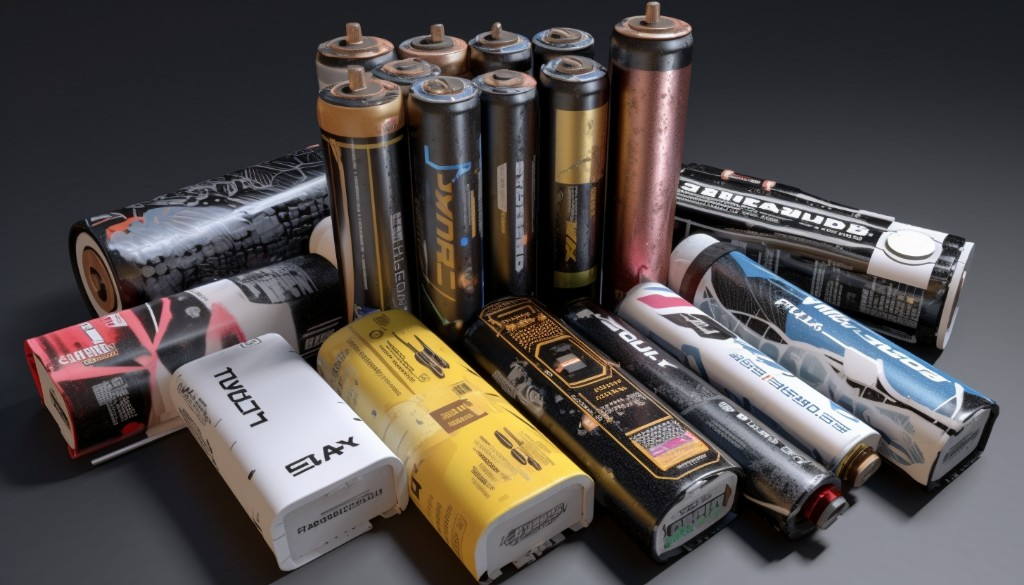
Lithium Batteries
One of the most common types of batteries used in electric skateboards is the lithium battery. Known for their high energy density and long lifespan, these batteries are lightweight and compact, making them an ideal choice for electric skateboard enthusiasts.
Lead-acid Batteries
Unlike lithium batteries, lead-acid batteries are heavier and bulkier. However, they are known for their durability and high capacity, making them a viable option for longer rides.
Li-ion Batteries
Li-ion batteries are another type of lithium battery used in electric skateboards. They offer a high energy density and have a slow loss of charge when not in use. However, they require proper care and maintenance to ensure longevity.
Nickel-Metal Hydride Batteries
Nickel-metal hydride batteries are less common in electric skateboards but are still used due to their high energy density and environmental friendliness. They can be recharged hundreds of times before they start to lose capacity.
Lithium Iron Phosphate Batteries
Lithium iron phosphate batteries are known for their safety features and longevity. They have a lower energy density than other lithium-based batteries but compensate with an impressive life cycle.
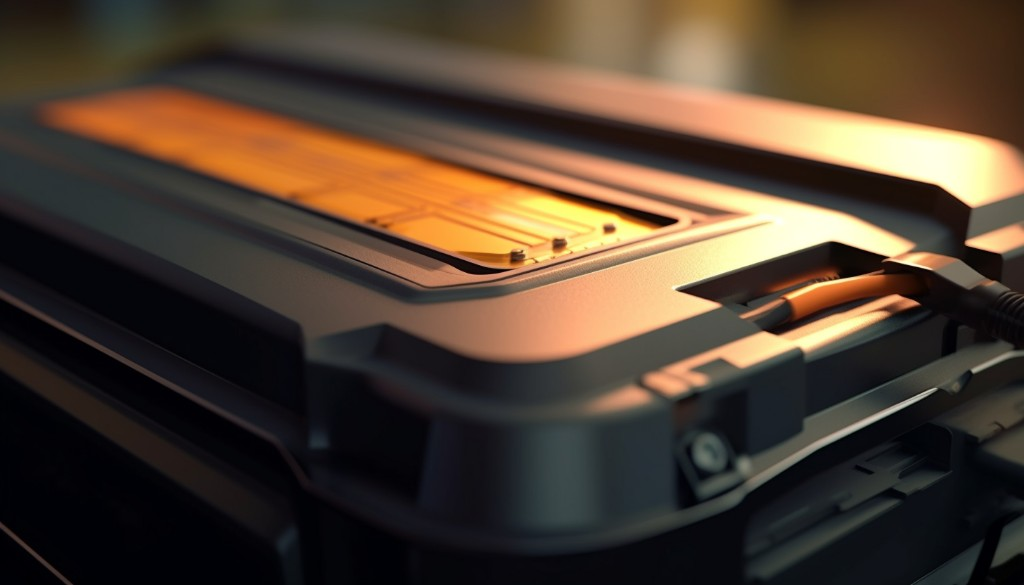
Deciphering the Electric Skateboard’s Battery System
The battery system is a key aspect to decipher when attempting to understand your electric skateboard and its performance. The various elements that comprise this system include voltage, ampere-hour (Ah), battery management system, and energy density.
Voltage and Ampere-hour
The voltage and current of your skateboard batteries are crucial indicators of its power capacity. The voltage represents the potential energy of the battery, while the ampere-hour measures the amount of current a battery can provide over a period.
Battery Management System
The battery management system (BMS) is an integral part of any electric skateboard. This system monitors and controls the charging and discharging process to prevent overcharging or discharging, contributing to the longevity of your battery.
Energy Density
Energy density refers to how much energy a battery can store for a given size or weight. The higher the energy density, the longer your electric skateboard can run on a single charge, enhancing your riding experience.
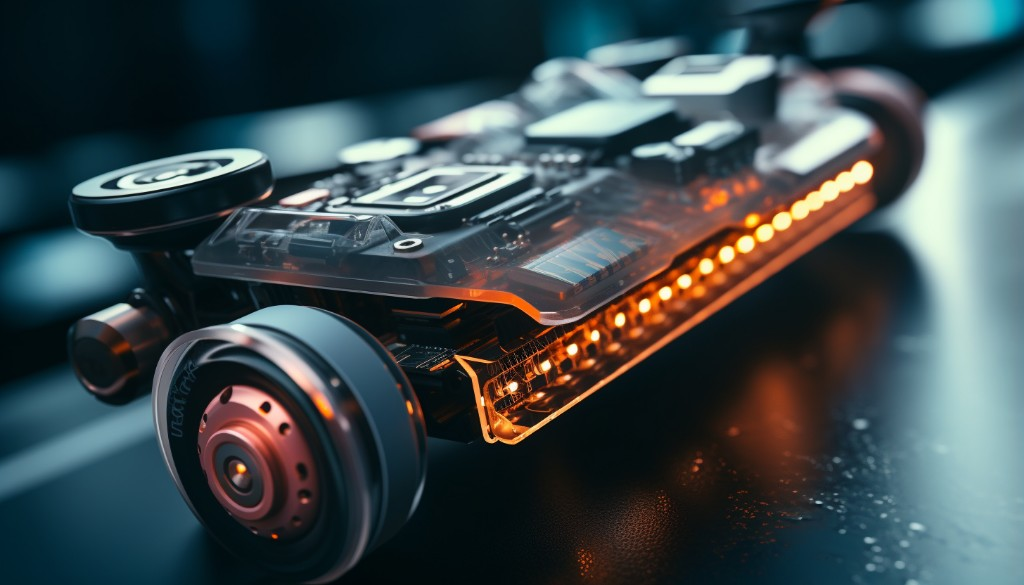
Ensuring Optimal Battery Health: Key Maintenance Tips
Ensuring optimal health of your skateboard batteries is pivotal for a prolonged lifespan and efficient performance. Here are some key electric skateboard battery maintenance tips:
- Regularly check the battery discharge rate. This refers to how fast your battery is losing power. If it’s discharging too quickly, it may indicate an issue that requires attention.
- Monitor self-discharge. All batteries lose some energy when not in use, known as self-discharge. If your battery is losing a significant amount of power while idle, it might be time for a check-up.
- Maintain an optimal energy level. Avoid letting your battery drain completely before recharging it. It’s best to keep it between 20% and 80% charged to prolong its lifespan.
- Implement a battery maintenance schedule. Regular check-ups and maintenance are vital to keep your batteries in top condition. This includes cleaning the terminals and checking for any signs of damage or wear.
By regularly applying these tips for battery maintenance, you’re more likely to enjoy a smooth, uninterrupted ride on your electric skateboard.
Checking and Cleaning Your Electric Skateboard Battery
Maintaining an electric skateboard involves more than just cleaning your electric skateboard, you also need to pay attention to the battery. A clean and well-maintained battery is crucial for a smooth and safe ride. So, let’s dive into the details of how to inspect, clean, and remove dirt and debris from your electric skateboard battery.
Inspection of the Battery
Regularly checking your battery is a preventive measure that helps detect minor issues before they become serious. Look out for any signs of damage such as cracks, ruptures, or leaks. If you notice any abnormalities, it’s best to seek professional help to avoid further damage or safety risks.
Cleaning the Battery
Cleaning your electric skateboard’s battery might appear challenging, but it’s relatively straightforward. The first step is to disconnect the battery from the skateboard. Following this, clean the battery housing with a dry cloth to remove any accumulated dust. For stubborn dirt, use a small brush with soft bristles. Avoid using water or cleaning liquids as they can harm the battery cells.
Removing Dirt and Debris
Dirt and debris can affect the performance of your battery. After every ride, make sure to clean the board thoroughly, especially around the battery compartment. Cleaning your electric skateboard also extends to the bearings. Clean the bearings using a dry cloth or a specialized cleaning brush.
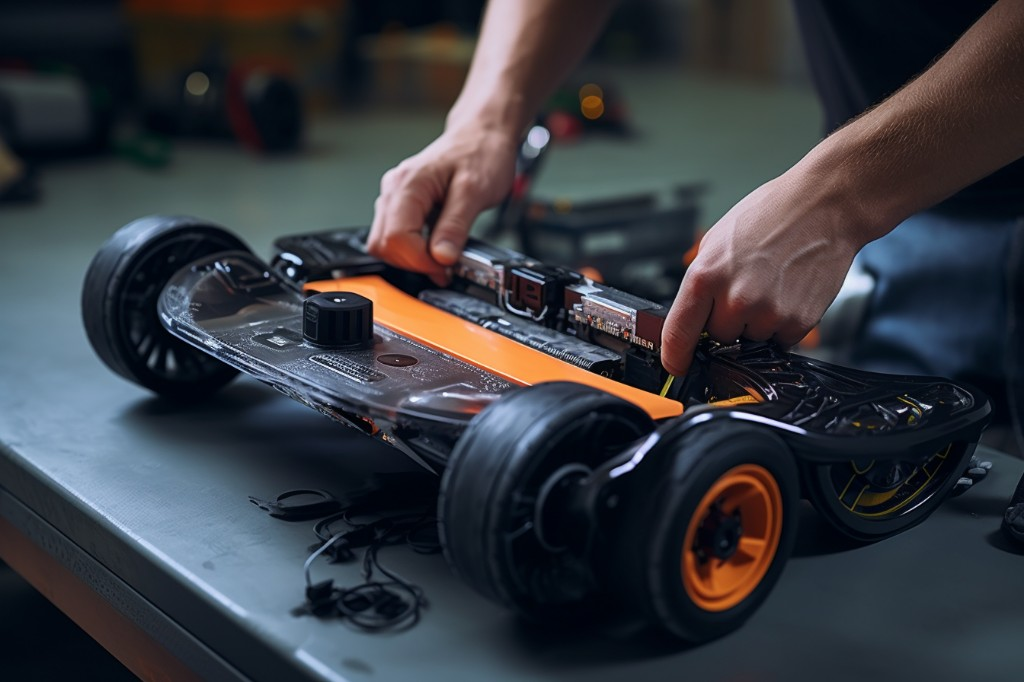
The Role of Temperature in Battery Performance and Maintenance
Temperature plays an essential role in the performance and longevity of your electric skateboard’s battery. Be it room temperature or the internal temperature of the battery, extreme temperatures can significantly affect the functioning of your board.
Room Temperature and Battery Temperature
The ideal room temperature for your skateboard’s battery is around 68-77°F (20-25°C). If the temperature dips or increases significantly, it can affect the performance of your skateboard. Similarly, if your battery gets too hot or too cold during operation, it can lead to decreased performance and even damage.
Effect of Extreme Temperatures
Extreme temperatures, both high and low, can have adverse effects on your battery. High temperatures could cause the battery to swell, leak, or even explode in some cases. On the other hand, extremely low temperatures can reduce the battery capacity leading to less range. Therefore, always store your electric skateboard in a place with a moderate temperature for long periods of time to avoid such risks.
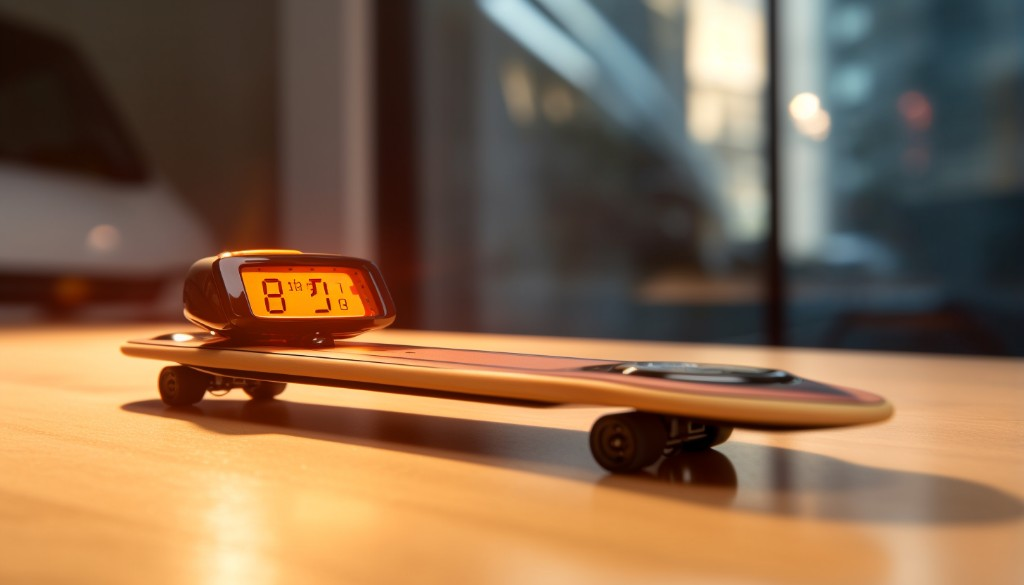
Smart Charging Habits for Prolonged Battery Life
How you charge your electric skateboard’s battery plays a significant role in determining its lifespan. Here are some tips to charge the battery smartly and ensure its longevity.
Avoid Overcharging and Undercharging
One thing that can significantly reduce your battery’s lifespan is either overcharging or undercharging it. Avoid keeping your electric skateboard plugged in after the battery is charged fully to prevent overcharging. Similarly, don’t frequently let your battery drain completely before recharging it as undercharging can lead to decreased performance over time.
Fast Charging Vs Slow Charging
While fast charging can be tempting because of its convenience, it is not always the best choice for your battery’s health. Fast charging often leads to overheating, which can degrade the battery over time. On the other hand, slow charging might take more time but is gentler on your battery cells and helps prolong their lifespan.
In conclusion, proper charging habits and maintaining an optimal temperature are crucial for prolonged battery life. Make sure not to overcharge your battery or expose it to extreme temperatures. Regular inspection and cleaning will also go a long way in preserving the health of your electric skateboard’s battery.

How to Store Your Electric Skateboard for Battery Longevity
When it comes to preserving the life of your electric skateboard battery, its storage plays a significant role. To store your electric skateboard effectively, you should consider the ideal conditions for its battery. These conditions can significantly influence the battery’s longevity.
Ideal Storage Conditions
First and foremost, the environment in which you store your electric skateboard should be dry and cool. Humidity and high temperatures can cause detrimental effects on your battery’s lifespan. Avoid storing your board in places that are subject to extreme temperature changes, such as garages or cars. Such environments can lead to condensation inside the skateboard’s battery compartment, leading to corrosion and battery damage over time.
To ensure that the skateboard is not exposed to these adverse conditions, it is recommended it be stored indoors, in a controlled environment with low humidity. This helps maintain the battery’s health and longevity.
Effect of Storage on Battery Life
An important aspect of maintaining battery longevity when storing your electric skateboard is ensuring it’s not stored while being fully charged or completely drained. It is recommended to charge the skateboard’s battery to about 50% to 60% before storing it.
To ensure that the skateboard is stored in the best state, check on it periodically. It’s a good practice to turn it on once a month to see if it needs a top-up charge. Neglecting this step can cause the battery to reach a harmful discharge level, reducing its lifespan over time.

Common Electric Skateboard Battery Issues and Troubleshooting Tips
Just like any other device powered by rechargeable batteries, electric skateboards are susceptible to problems related to their power source. Being aware of common electric skateboard battery issues and troubleshooting tips can help you maintain its performance.
Battery Damage Symptoms
The first step in electric skateboard battery maintenance is identifying potential problems. If you notice a significant drop in power or range, it may indicate that your battery needs attention. Also, if your skateboard suddenly shuts off or doesn’t turn on at all, the battery could be damaged or defective.
If you hear any unusual noises from the board during operation, it’s time to check your belt. A faulty drive belt can put undue strain on the battery, leading to decreased performance.
Troubleshooting Techniques
Once you’ve identified potential issues with your skateboard’s battery, try some basic troubleshooting steps. Firstly, remove and reinsert the battery to ensure it’s properly connected. Secondly, check drive belt for any signs of wear and replace if necessary.
If these steps don’t resolve the issue, consider seeking professional help. A skilled technician can diagnose and correct complex problems beyond the scope of basic maintenance.

The Crucial Aspect of Safe Battery Disposal and Recycling
Electric skateboard batteries don’t last forever. After several years of use, they’ll eventually lose their capacity and require replacement. Properly disposing of these batteries is not just a good idea – it’s crucial for both safety and environmental reasons.
Impact of Improper Disposal
Batteries contain various chemicals that can be harmful to the environment if not disposed of properly. If thrown into regular trash bins, these chemicals can seep into the ground and contaminate soil and waterways. Moreover, certain types of batteries can even cause fires if improperly discarded.
Hence, extending your consideration for battery life past usage to disposal is crucial. Proper disposal can prevent harmful substances from ending up in our environment.
Recycling Benefits
Recycling used electric skateboard batteries is an excellent way to mitigate the impact of these chemicals on our environment. Many components of these batteries can be reused, reducing the need for raw materials and energy for producing new ones.
Companies specializing in recycling offer services where they accept used batteries for safe disposal or recycling. By choosing to recycle your skateboard battery, not just once but each time it needs replacement, you play an essential role in conserving our environment’s health.
Proper electric skateboard maintenance includes careful storage, timely troubleshooting and responsible disposal or recycling of batteries. Following these practices will contribute significantly to your skateboard’s performance while minimizing its environmental footprint.
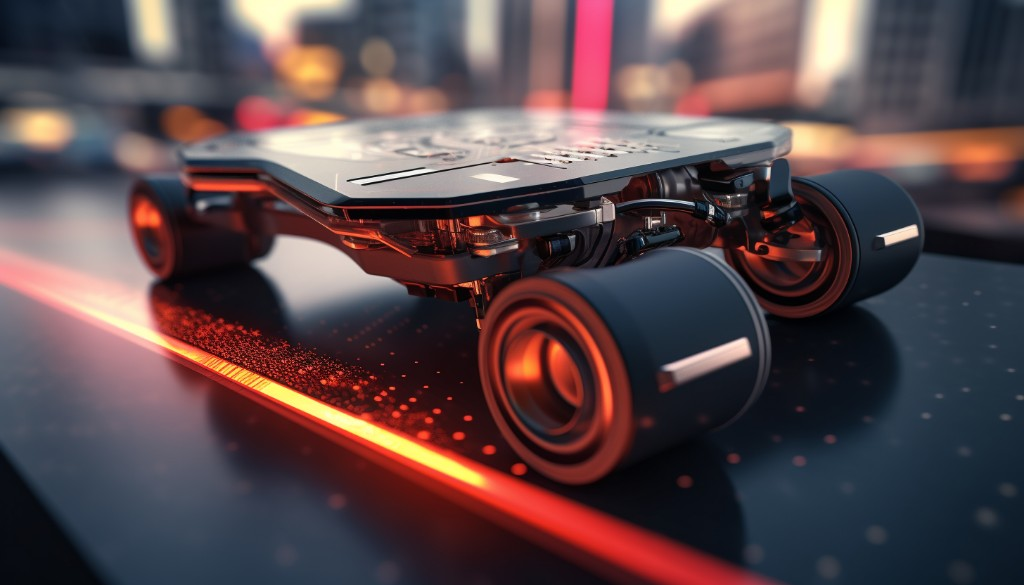
Closing Thoughts
Just like fuel is to a vehicle, a battery is to an electric skateboard; the cornerstone that powers it. Understanding the different types of skateboard batteries and deciphering the electric skateboard’s battery system leads the way to ensuring optimal battery health. Maintenance tips such as checking and cleaning your electric skateboard battery regularly, understanding the role of temperature in battery performance and maintenance, and adopting smart charging habits are pivotal to prolonging battery life.
Furthermore, knowing how to store your electric skateboard for battery longevity, recognizing common electric skateboard battery issues and troubleshooting them appropriately can save you both time and money in the long run. Following the battery maintenance tips contained within this article will empower you to keep your electric skateboard in top condition for many more exhilarating rides ahead!
Frequently Asked Questions
What type of battery is best for my electric skateboard?
The type of battery best suited for your electric skateboard largely depends on your riding style, frequency of use, and budget. Lithium-Ion batteries are popular thanks to their high energy density, light weight, and longevity. However, they can be expensive compared to other types such as Lead-Acid or Nickel-Cadmium batteries.
How often should I check my skateboard’s battery?
As a rule of thumb, it is advisable to check your skateboard’s battery every month. Regular check-ups can help detect potential issues early on, ensuring the long-term health and performance of your skateboard’s battery.
What are some signs my electric skateboard’s battery might be failing?
Some common signs of a failing electric skateboard battery include reduced range or speed, longer charging times, or the battery becoming unusually hot during use or charge. If you notice any of these signs, it is time to thoroughly inspect the battery or consider replacing it.
How can I recycle my old electric skateboard batteries?
Recycling old electric skateboard batteries is a responsible step towards environmental conservation. You can do this by contacting your local waste disposal service or battery recycling facility to understand their specific collection procedures.
Are there any specific tools I need for maintaining my skateboard’s battery?
Yes, having specific tools can make maintaining your electric skateboard’s battery easier. These may include a voltmeter to check battery voltage, a brush for cleaning battery terminals, a charger specifically designed for your type of battery, and safety gear such as gloves and protective eyewear.
